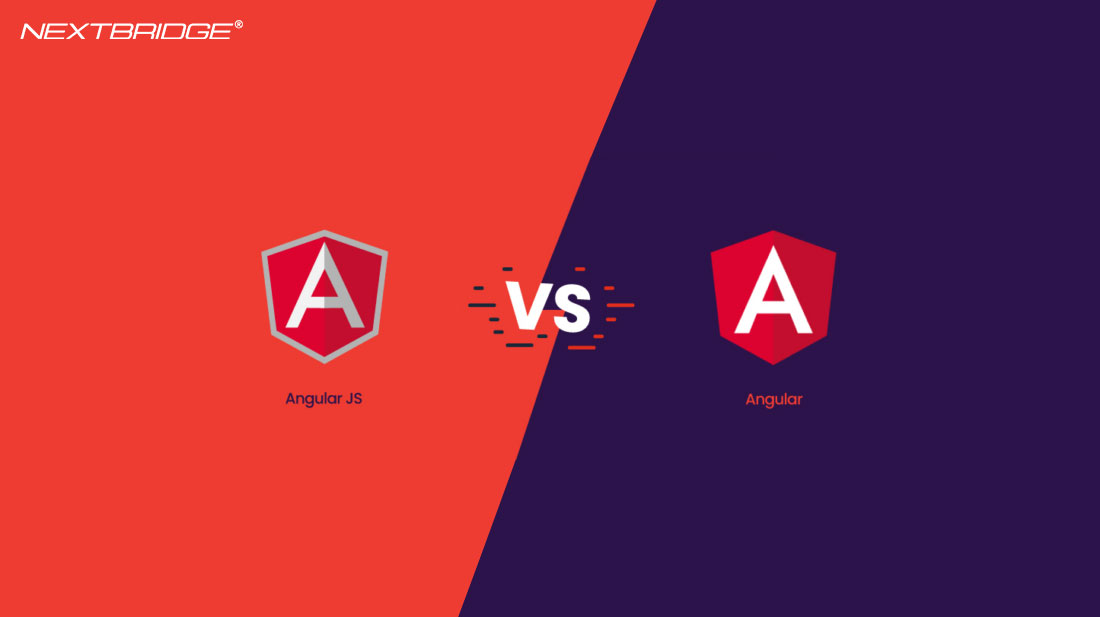 Back to all articles
Back to all articles
Blogs
7 Unique Differences Between Angular and AngularJS in 2022


Web development is no more a miracle especially when you have an access to enormous types of software technologies and frameworks.
These trending technologies, tools, and frameworks have proved to be helpful and savvy.
All you need to do is choose the appropriate types of tools to digitalize a product. One of those famous protocols is angular and its versions. In this blog, we will elucidate the difference between Angular and AngularJS.
What is Angular?
For web application development, Angular is considered a real wonder. It is an open-source JS framework written in typescript language. Furthermore, it uses HTML syntax to define the program’s components. Single-page web applications are undoubtedly built using this framework.
Additionally, Google allows developers to work within the standard structure of Angular and maintain it and if you must know, as per the latest stats, Angular is expanding to a great extent.
Related Read: JS frameworks wonders
Types of Angular?
How many versions of Angular are there? Before we proceed to the components of Angular and its versions, let’s shed some light on different types of Angular:
| Angular JS | Angular 2 | Angular 4 |
| Used to create dynamic web applications and an open-source JS framework that uses HTML as a template language. It promotes readability and quick delivery of codes. | Angular 2 is an extended version which is another typescript framework to develop frontend web apps. | It is the latest version of Angular which is no more different from Angular 2. Instead, it is an improved version of Angular 2 and used as a backup framework. |
Components of Angular and AngularJs
Before you jump to the difference between Angular and AngularJS, it’s imperative to know about the components utilized in both frameworks.
Angular is a component-based typescript language that uses building blocks. Its components play an important role in designing user interfaces as UI’s each portion is defined as a component.
In Angular JS, directives are used instead that allow their users to reuse the codes. Besides that, it uses scopes and controllers. Component Directives in Angular JS are used to create user interfaces.
Difference Between AngularJS and Angular versions
Based on architecture, expression syntax, language, routing, performance and speed, and mobile support, we will compare all Angular latest versions. So, let’s get started!
1- Architecture
Angular: It uses components that are directives with templates and there’re two types of directives:
Structural directives: DOM (Document Object Model) is altered by replacing its elements
Attributive directives: It changes the elements display and how the DOM behaves.
Angular JS: AngularJS architecture is based on MVC (model-view-controller) framework. As you must know, MVC works as a central component that is responsible for managing rules, logic, and data.
MVC functionality: The view layer transmits an output based on the information in the Model layer. Besides that, the Controller receives input, transforms it into commands, and sends them to the View and Model layers.
2- Expression Syntax
Is there a difference between Angular and AngularJS? Of course, there is. Check it out in terms of Expression Syntax.
Angular: Angular uses [] for property binding and () for event binding.
AngularJS: To deploy the right property/image to the AngularJS, remember to utilize the ng directive.
3- Language
Angular: We know it is built on Microsoft’s typescript language (a superset of Javascript). Interestingly, it has some unavoidable advantages attached like the benefits of ES6 and type declarations.
AngularJS: This version is written in Javascript.
4- Routing
Are you curious to know what is the one main difference between angularJS and angular? Yes? Well, Angular employs @RouteConfig{(…)} in its code sets whereas $routeprovider.when() is used in AngularJS codes.
5- Mobile Support
What can astonish you is AngularJS doesn’t build with mobile support in mind. But, all other Angular versions provide codesets catering to mobile support and maintenance.
6- Performance and Speed
What is the difference between different angular versions when it comes to analyzing speed or performance? Find out below!
Angular: Once the version is updated, it has improved the performance and speed of the whole software or product.
AngularJS: The time and efforts are brought down when two-way binding feature is deployed in the software development lifecycle.
7- Tool Support
One notable difference between Angular and AngularJS versions is:
Angular: It uses CLI (command line interface) to reduce time incurred on application development.
AngularJS: This JS framework is dependent on third-party tools like WebStorm and IDE (integrated development environment).
Conclusion:
Finally, we have talked about the noteworthy difference between Angular and AngularJS. Hope the buzz is cleared now and you have gotten enough know-how about these scripting languages and their differences.
Don't hire us right away
talk to our experts first,
Share your challenges, & then decide if we're the right fit for you! Talk to Us
Partnerships & Recognition
Commitment to excellence






